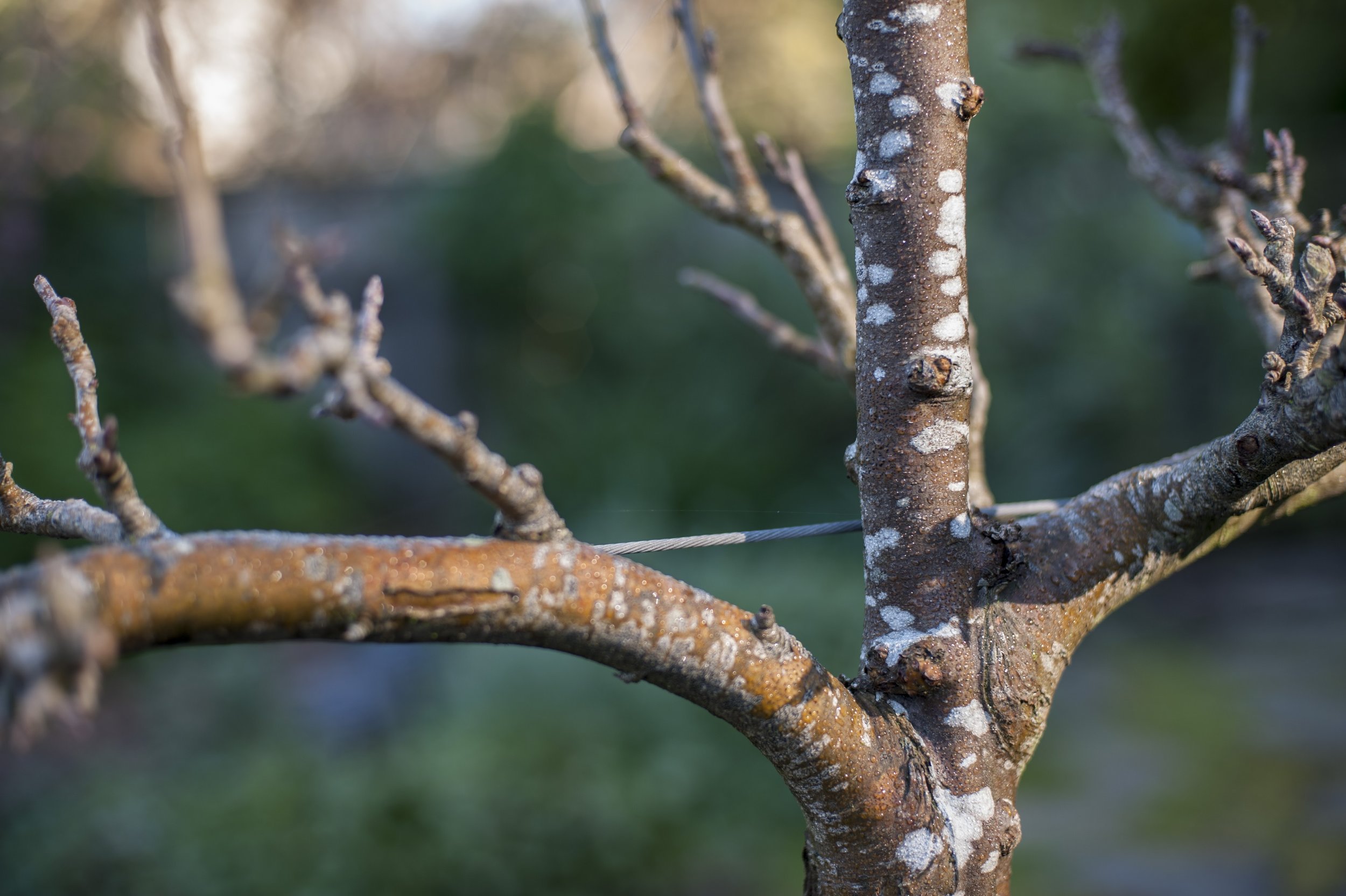Winter Beauty
/What makes a garden beautiful in winter? Although our mild climates let some blossoms from late summer and fall hang on plants into January, it is not flowers that make a beautiful garden in the dead of winter.
In winter, the shape and structure of the garden is unclothed. Without the distraction of flower colors, and with bare branches exposed on deciduous trees and shrubs, errors in pruning or design are painfully obvious, while good pruning and design hold the garden’s beauty firmly grounded.
Apple branches in winter.
Here are some factors to consider as you look out your window at the wet or chilly garden this month.
Shape: do the pathways, retaining walls, patios, and other hardscape features divide the garden into balanced, usable spaces with appealing lines for the eye to follow as it wanders through the garden spaces? (Hint: think in curves)
Pruning: are the large trees and shrubs well pruned into graceful, open shapes that fit well into the spaces they occupy? (Hint: this might be a job for an arborist, but what a great investment)
Foliage Color: while your plants are out of bloom, most of the garden color comes from foliage. Does your garden include plants with silvery, golden, or red foliage? Even different shades of green are important. (Hint: lots of medium green plants together can be a visual jumble, but if each plant has a contrasting foliage color, their individual shapes and textures show up as beauty)
Foliage color and shape contrast.
Texture: every plant has its own texture and posture; erect, rounded, weeping, tiered, or spiky. Does your garden create a harmonious whole? Does it match well with your home? Your personal style?
Repeated Elements: Nature designs landscapes with repeated elements. A grassy meadow may have hundreds of grasses, but only two or three varieties, each with a color and texture that repeats throughout the space. Repeated elements, whether colors, plants, or hardscape features like pots, walls, or paving, can help unify your design while resting and informing your eye.
This is a wonderful time of year to make changes in your garden - New Year’s resolutions in horticulture! Add a half wine-barrel of salad greens, or a small, sunny herb garden, and bring your garden into your kitchen. Or pick a plant that you really don’t like, and replace it, finally, with something better. Maybe a favorite feature could be repeated once, or a hundred times. Maybe the plant whose fragrance reminds you of someone special could be moved to a more prominent location. January is a wonderful month for gardeners to dream big dreams, and sharpen their pruners!




